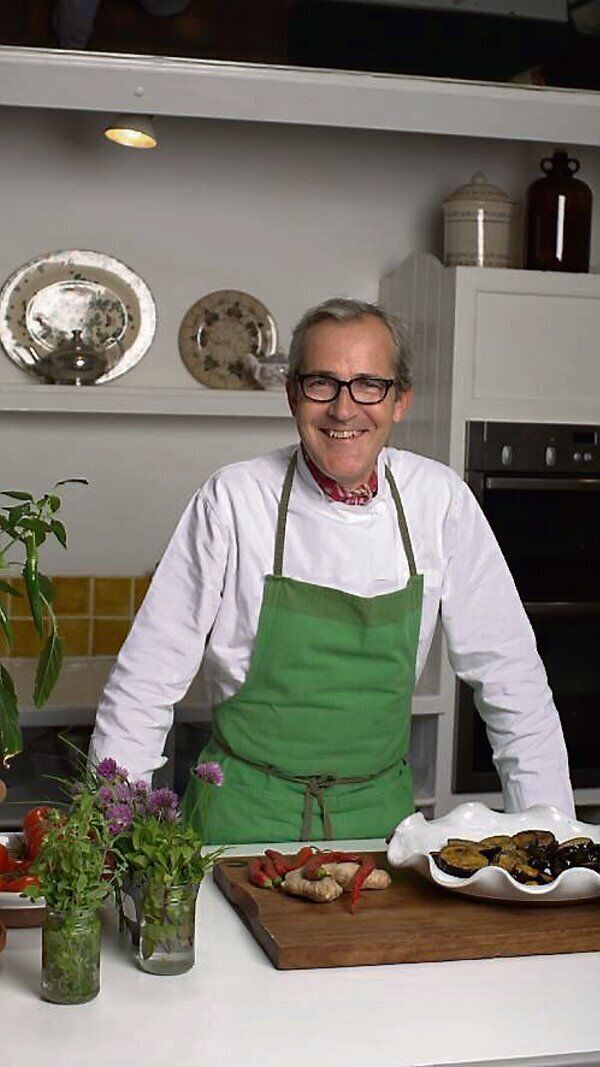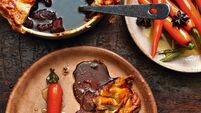Four top chefs reveal their favourite herb and how to use it

CELEBRATING the 50th anniversary of her Ballymaloe House Restaurant, Myrtle Allen, in an Irish Examiner interview, recalled a solitary diner of 40 years ago. As he ordered, she whispered to a staff member to run to the garden for mint. When the dish was served, the diner picked up the herb and asked, incredulously, “is this fresh mint?” As Myrtle recalled with a chuckle, she’d ‘won!’
What she meant was she had impressed her solitary diner, it being rare at the time for a restaurant, even the finest, to use fresh herbs, and she had more than a suspicion about the identity of this lone wolf. Her suspicions were correct and, not long after, Ballymaloe House was awarded a Michelin Star.
Have you ever emerged from a restaurant after a wonderful meal, asking, ‘how on earth did the chef cook that dish. It never tastes like that when I do it?’
Sure, there are tricks that bridge the gap between home-cooked food and fine dining, but one of the best is the judicious use of fresh herbs.
This can elevate the ordinary into the extraordinary. What’s more, the growing of herbs and their culinary application couldn’t be simpler. Let the experts tell you more!
Kevin Aherne, chef/proprietor, Sage Restaurant, Midleton, Co Cork

“I use an awful lot of fresh herbs, especially coming into summer, adding them at the last minute to lift the flavour. Marjoram will soon be in and I love that, but my favourite herb, at the moment, is chervil. It’s the texture, for a start. You can eat the entire herb. It’s got a tiny little crunch in the stem, but the flower is so delicate it doesn’t take over the mouth, but lifts the flavour. It is sweet, at first, and then develops the slightest touch of aniseed. There is no bitterness, which is one of my favourite things about it, and it’s very easy to grow. It’s very good on fish; I use it on hake garnished with mussels and spinach, and it’s a lovely addition to salads. It doesn’t dominate”.
“Once tomatoes come into season, dice raw tomatoes, add plenty of scallions, lots of chervil, lemon verbena, sea salt and if the tomatoes aren’t sweet enough, a little honey — delicious with fish”.
Sunil Ghai, executive chef, Ananda, Dublin

“Indian food is all about herbs and spices, and I love fresh coriander. You have the subtlety of taste and you can use the whole plant in our cuisine, seed, stem and leaves. The seeds are ground into powder. You don’t really get the roots here, but, in India, we use them for marinading lamb, in particular. You can crush it with a mortar and pestle with some garlic, and use it when grilling lamb”.
“Coriander and mint chutney, to go with grilled lamb: coriander, mint, fresh apple (Granny Smith), a little bit of garlic, salt and sugar, blend in the blender. Be sure to add a bit of ice, because, when you puree anything, it generates heat and chlorophyll goes off quickly in the heat, but the ice keeps the temperature down”.
Cliodhna Prendergast

“The reason I love it is, as a kid, down at the lakes at Gowla, in Connemara, there was always this smell, but I never realised what it was. Some years later, someone pointed it out to me and I said, ‘that’s the smell from the lake!’ To me, it is the smell of Connemara, a sweet, resinous smell lingering in the air and it’s just glorious! You can use the leaves and when the leaves go, you can use the bud. You dry it and grind it. I know its more usually foraged, but I’ve been having success cultivating it, starting by rooting it in water, but sweet geranium can make a good substitute in cordials. “Lately, I’ve been using it in turf-smoked lamb. You put the herb in the smoker with the turf and grind the buds down, and use it as a condiment, like salt directly sprinkled onto the lamb”.
“Blackberry and bog myrtle cordial: cook the blackberries, with a little water, to a compote. Add bog myrtle; leave to infuse overnight. Strain through a muslin. Weigh strained juice and add an equal amount of sugar. Bring to the boil”.
Rory O’Connell, chef/teacher/cookbook author

“It shouldn’t be confused with oregano, even though they come from the same family. It’s got a sweet, slightly deep, slightly smoky flavour. It’s instantly likable, yet slightly complex at the same time. And it’s unbelievably versatile: on potatoes or in a potato salad; with sauteed courgettes; with fish, particularly good with salmon, quite good with mackerel; and it is fabulous with poultry, chicken or turkey.
“It is one of those funny herbs that I usually use with local dishes or Italian dishes, but it is more complex than that and works well with cumin and coriander and is absolute heaven with lamb”.
Pinch of sea salt and peeled garlic clove into mortar, pound a little, add 4 tbsp of coarsely chopped almonds, pound for Ireland. “Then, add 4-6 tbsp of chopped marjoram, drizzle of olive oil until runny pesto consistency, and small grating of lemon zest and parmesan to bring all the flavours together. Sublime with lamb.
HOW TO GROW HERBS
Garden designer and horticulturalist Triona Murphy teaches at the National Learning Network, in Bantry, Co Cork, and is the community gardener at Niche Community Health Project, Knocknaheeny.
“Growing herbs is easy—a windowsill or outdoor pots will do—but it helps to imagine where they come from in the world and attempt to replicate those conditions. For example, sage, rosemary, thyme and marjoram originate in Mediterranean climates and like dry, well-drained soil and sunny, sheltered sites.
Herbs don’t need to be mollycoddled so, if you can grow it outdoors, do so (for example parsley; indoors during winter, outdoors in summer).”
This is easy, especially with softer, herbs, such as chives, basil, coriander. Cover seeds with light sprinkling of compost, to about twice depth of seed. Keep well-watered but not waterlogged. They need a lot of heat to germinate — like a sunny window.
Pot in potting soil and keep in sunny, draught free location. Basil and coriander need as much sun as possible, (conservatory or polytunnel). Chives and parsley perform better outdoors in warmer weather. To water, stand pot in bowl of water for 20 minutes. Do not overwater. Coriander can be tricky, grows fast from seed but even if it bolts, you will get a few leaves.
Start in a small pot but transfer to larger pot. Sage, rosemary, marjoram, thyme like sunny, sheltered spots and should be in well-drained sandy soil. If potting, it is vital to layer drainage material at the bottom (gravel, broken pottery, etc). Add 2/3 top soil/real earth (as opposed to peat moss preparations) with 1/3 sand, grit or small gravel. Don’t add compost or manure. Underfeed. Use organic tomato feed once a month.







